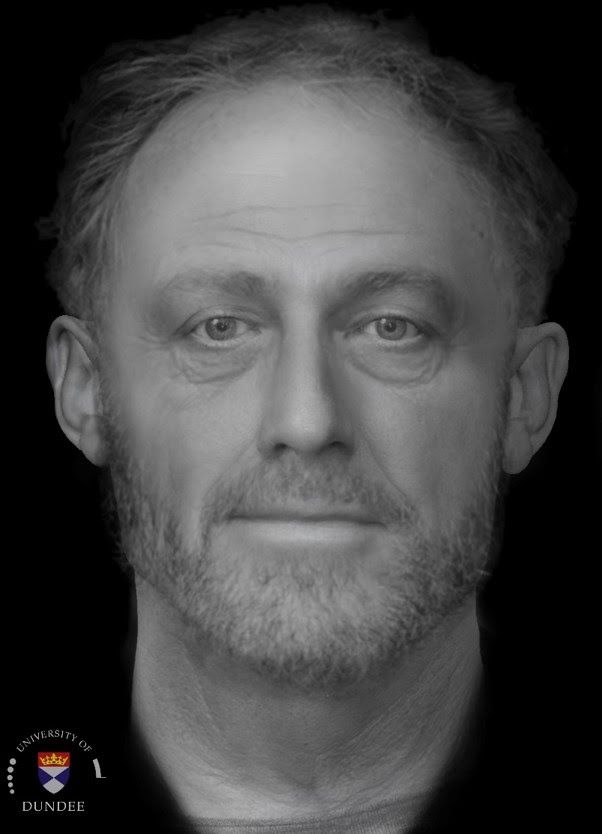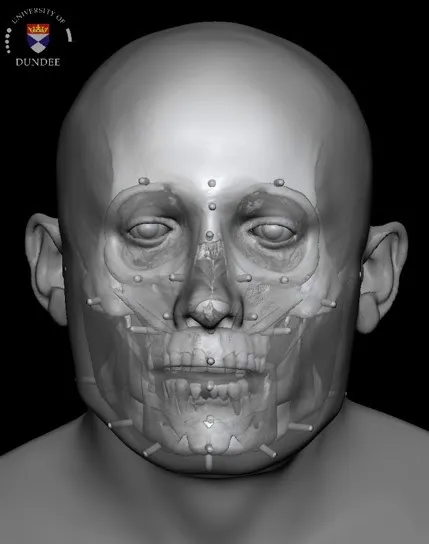Facial Reconstruction of Medieval Man Sheds Light on England’s ‘Ordinary Poor’
“Context 958” lived a harsh life and died destitute
/https://tf-cmsv2-smithsonianmag-media.s3.amazonaws.com/filer/e6/5b/e65ba041-22d9-46c1-b46b-ed505bf7977c/20170320_101436.jpg)
The man known as Context 958 spent his last days in the Hospital of St. John the Evangelist, a home for the destitute in medieval England. He died sometime in the 1200s and was given an unremarkable burial in the expansive graveyard behind the hospital. For centuries, he was forgotten, a mere speck on the annals of history. But a team of researchers recently released a detailed facial reconstruction of Context 958, offering remarkable insight into the life of an ordinary medieval man.
As Gizmodo’s George Dvorsky reports, the man’s remains were among 400 complete burials unearthed between 2010 and 2012, after archaeologists discovered the medieval graveyard underneath the Old Divinity School of St John’s College at Cambridge. Context 958, as he was dubbed by researchers, was interred face-down—“a small irregularity for medieval burial,” John Robb, a professor of Archaeology at the University of Cambridge, says in a press release.
Using facial reconstruction technology, researchers were able to piece together a picture of what Context 958 may have looked like. Their reconstruction suggests that he had close-set eyes, thin lips, and a square jaw. Painstaking analysis of his bones and teeth revealed additional details about Context 958, who seems to have led a rather harsh existence.
The man was over 40 when he died, and his skeleton is robust “with a lot of wear and tear from a hard working life,” says Robb. Researchers can’t be sure what Context 958 did for a living, but it is likely that he specialized in a trade of some kind. His job may have given him access to fish and meat, since his diet was rich in animal protein. Archaeologists also found evidence of a blunt-force trauma to the back of Context 958’s skull, which had healed over by the time of his death.
Context 958 seems to have endured adversity in childhood, too. His tooth enamel had stopped growing on two occasions during his youth, suggesting “that he had suffered bouts of sickness or famine early on,” according to Robb.
The location of Context 958’s grave suggests that he spent his last days ill, impoverished and alone. The Hospital of St. John the Evangelist was built in 1195 as a space for poor and sick individuals with no one else to care for them. Context 958 seems to have hit a rough patch before his death, the press releases states, possibly after an illness rendered him unable to work.
The analysis of Context 958’s remains is the first output of a collaboration between Cambridge University’s Division of Archaeology and the University of Dundee’s Centre for Anatomy and Human Identification. Relying on the trove of remains found at the hospital graveyard, experts will continue to piece together the life stories of Cambridge’s urban poor. Their project is titled “After the plague: health and history in medieval Cambridge.”
The goal of the initiative is to humanize a demographic that is rarely represented in historical texts. “Most historical records are about well-off people and especially their financial and legal transactions,” Robb explains in the press release. “[T]he less money and property you had, the less likely anybody was to ever write down anything about you. So skeletons like this are really our chance to learn about how the ordinary poor lived.”

